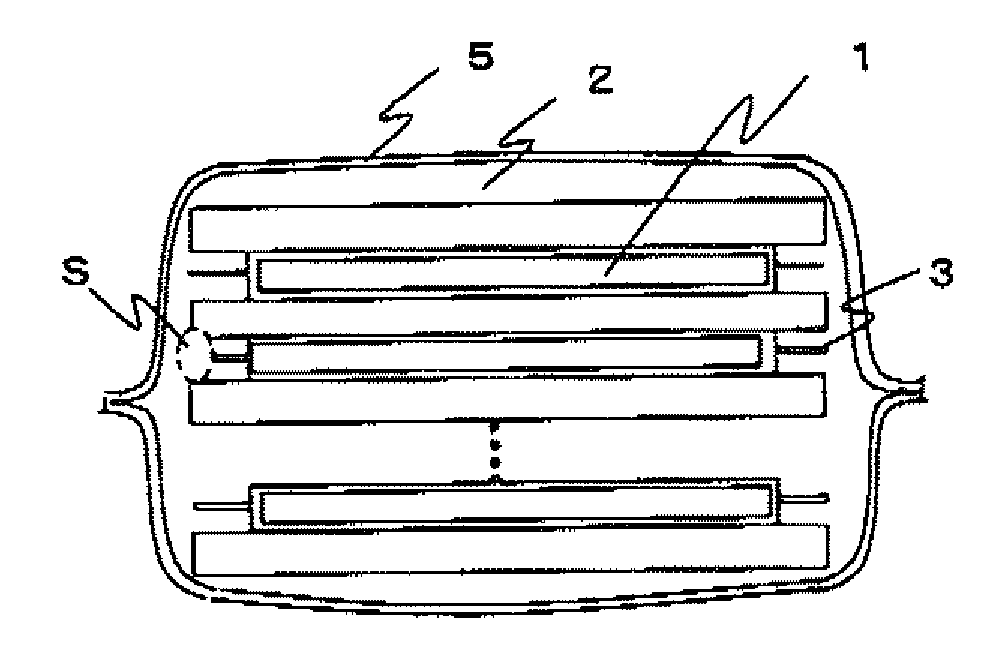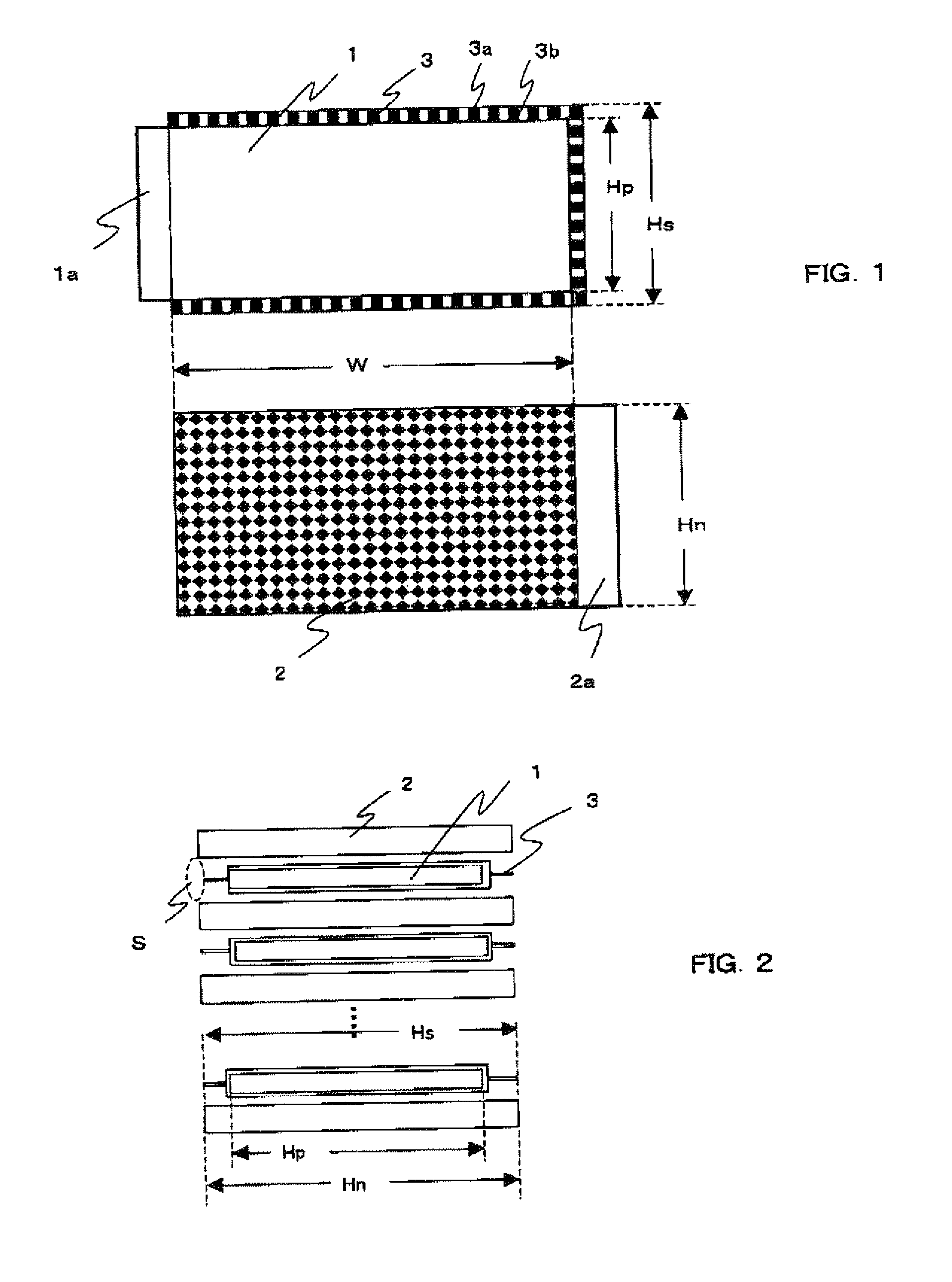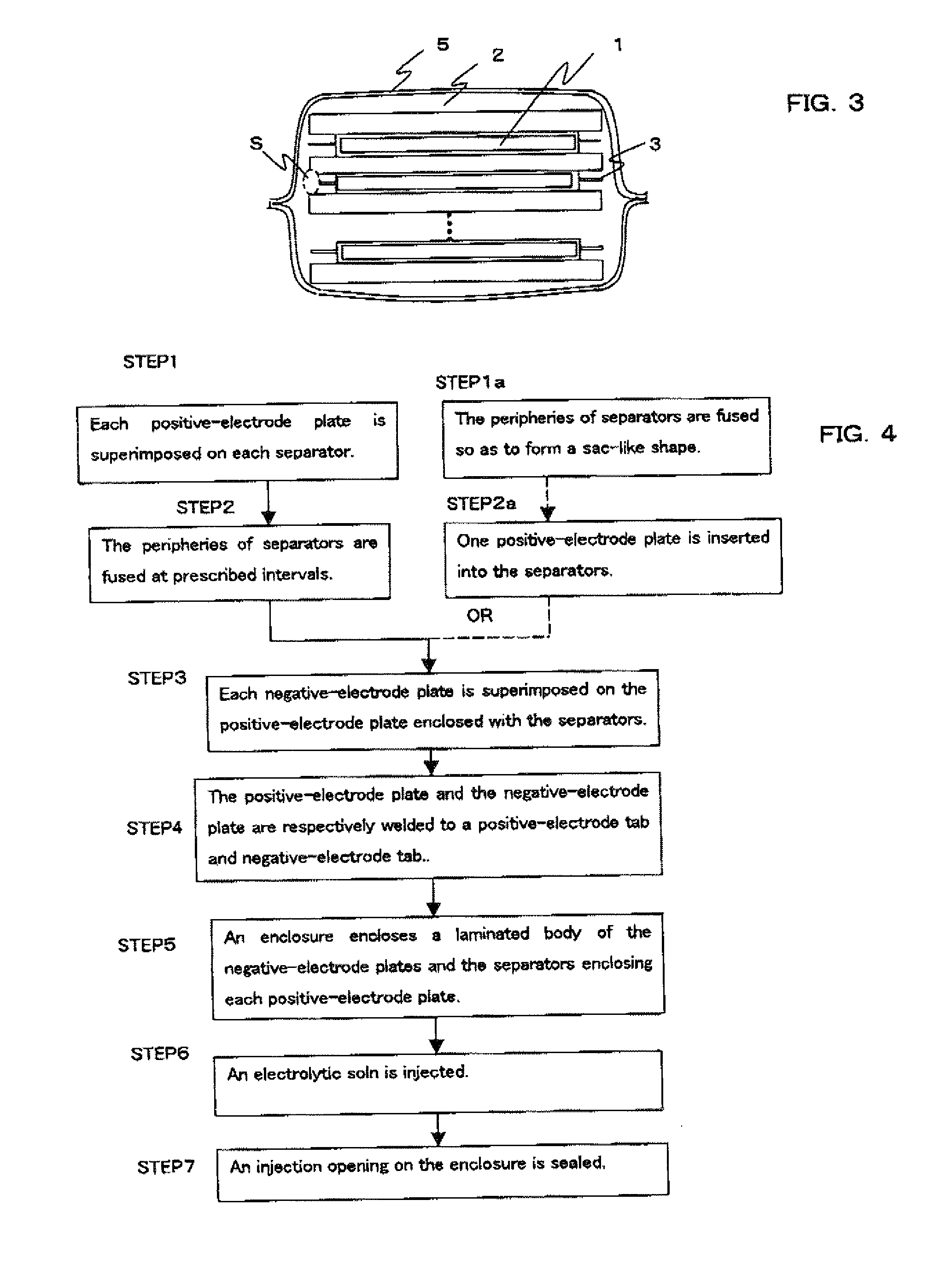Nonaqueous electrolytic solution secondary battery and method for preparing the same
a secondary battery and nonaqueous electrolytic technology, which is applied in the direction of cell components, sustainable manufacturing/processing, final product manufacturing, etc., can solve the problems of battery also having a problem of infiltrating the electrolytic solution uniformly, discordance of layers, and extreme long injecting time, so as to achieve the effect of shortening the injecting time of the electrolytic solution
- Summary
- Abstract
- Description
- Claims
- Application Information
AI Technical Summary
Benefits of technology
Problems solved by technology
Method used
Image
Examples
example 1
[0085]In a process for preparing a positive-electrode plate, N-methyl-2-pyrrolidone (NMP) as a solvent is added to a mixture of a positive active material containing 100 parts by weight of LiMn 204, a conductive material containing 5 parts by weight of acetylene black, and a binder containing 5 parts by weight of PVdF, and the solution is mixed by use of a planetary mixer so as to prepare a positive-electrode paste The prepared paste is uniformly applied on both sides of a belt-like aluminum film which is a positive current collector and has a thickness of 20 μm, by use of a coating device, except a section where is to be uncoated. The aluminum film coated with the paste is dried under reduced pressure at 130° C. for 8 hours, and then pressurized by use of a hydraulic press. The positive-electrode plate is prepared as described above, and is cut to a prescribed size. As a result, the positive-electrode plate having 252 mm in width, 320 mm in length, and 80 μm in thickness is prepare...
example 2
[0092]In Example 2, two separators are cut to a width of 256 mm, and a negative-electrode plate is cut to a width of 256 mm. A positive-electrode plate having the same size as that of Example 1 is sandwiched between the two separators. A total length of the separators, which protrude in the direction of the shorter sides (width) of the positive-electrode plate, is set to be 4 mm. A secondary battery is prepared through the same procedure as that in Example 1 except the total length above.
example 3
[0093]In Example 3, two separators are cut to a width of 262 mm, and a negative-electrode plate is cut to a width of 262 mm. A positive-electrode plate having the same size as that of Example 1 is sandwiched between the two separators. A total length of the separators, which protrude in the direction of the shorter sides (width) of the positive-electrode plate, is set to be 10 mm. A secondary battery is prepared through the same procedure as that in Example 1 except the total length above.
PUM
| Property | Measurement | Unit |
|---|---|---|
| length | aaaaa | aaaaa |
| length | aaaaa | aaaaa |
| length | aaaaa | aaaaa |
Abstract
Description
Claims
Application Information
 Login to View More
Login to View More - R&D
- Intellectual Property
- Life Sciences
- Materials
- Tech Scout
- Unparalleled Data Quality
- Higher Quality Content
- 60% Fewer Hallucinations
Browse by: Latest US Patents, China's latest patents, Technical Efficacy Thesaurus, Application Domain, Technology Topic, Popular Technical Reports.
© 2025 PatSnap. All rights reserved.Legal|Privacy policy|Modern Slavery Act Transparency Statement|Sitemap|About US| Contact US: help@patsnap.com



